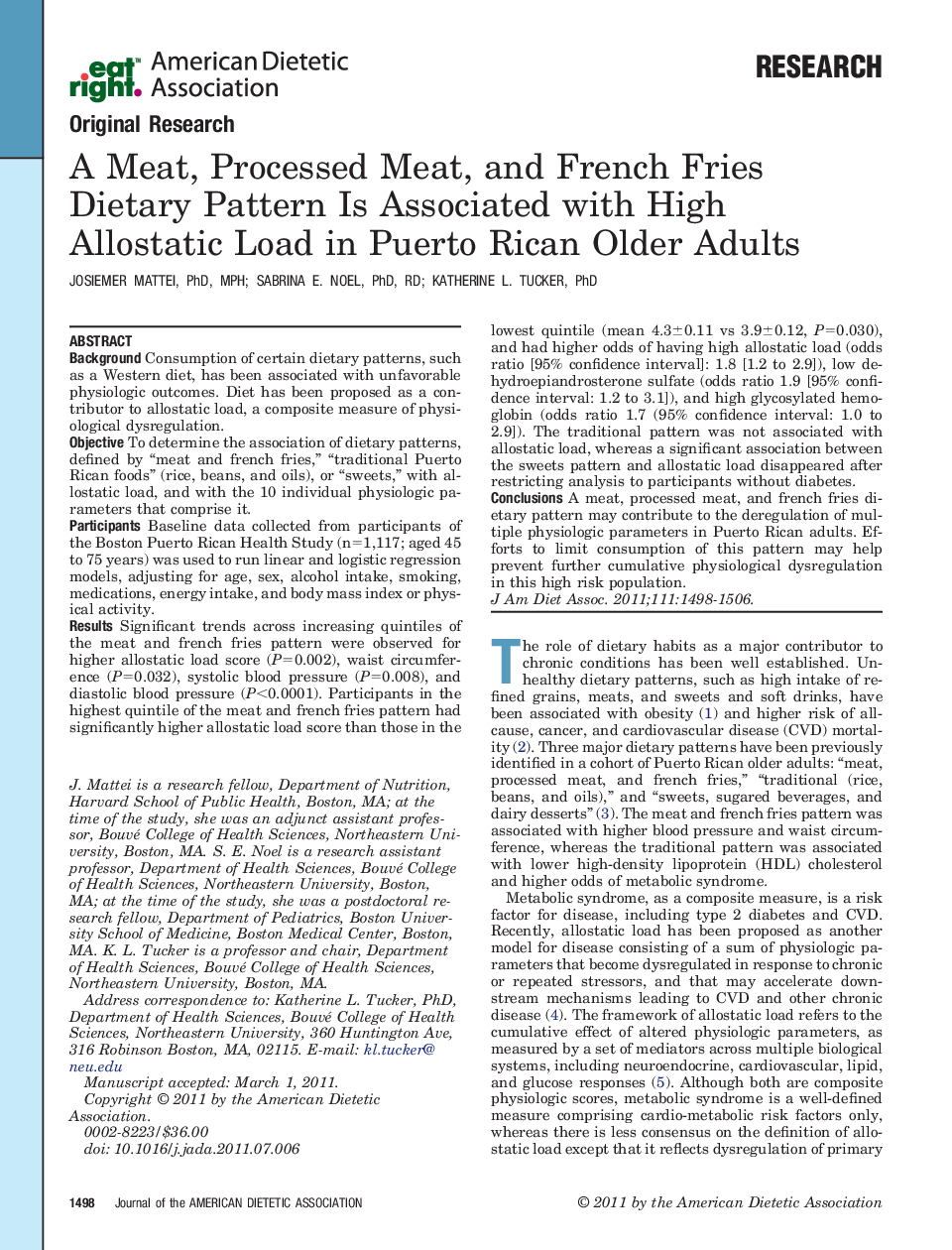| Article ID | Journal | Published Year | Pages | File Type |
|---|---|---|---|---|
| 2653806 | Journal of the American Dietetic Association | 2011 | 9 Pages |
BackgroundConsumption of certain dietary patterns, such as a Western diet, has been associated with unfavorable physiologic outcomes. Diet has been proposed as a contributor to allostatic load, a composite measure of physiological dysregulation.ObjectiveTo determine the association of dietary patterns, defined by “meat and french fries,” “traditional Puerto Rican foods” (rice, beans, and oils), or “sweets,” with allostatic load, and with the 10 individual physiologic parameters that comprise it.ParticipantsBaseline data collected from participants of the Boston Puerto Rican Health Study (n=1,117; aged 45 to 75 years) was used to run linear and logistic regression models, adjusting for age, sex, alcohol intake, smoking, medications, energy intake, and body mass index or physical activity.ResultsSignificant trends across increasing quintiles of the meat and french fries pattern were observed for higher allostatic load score (P=0.002), waist circumference (P=0.032), systolic blood pressure (P=0.008), and diastolic blood pressure (P<0.0001). Participants in the highest quintile of the meat and french fries pattern had significantly higher allostatic load score than those in the lowest quintile (mean 4.3±0.11 vs 3.9±0.12, P=0.030), and had higher odds of having high allostatic load (odds ratio [95% confidence interval]: 1.8 [1.2 to 2.9]), low dehydroepiandrosterone sulfate (odds ratio 1.9 [95% confidence interval: 1.2 to 3.1]), and high glycosylated hemoglobin (odds ratio 1.7 (95% confidence interval: 1.0 to 2.9]). The traditional pattern was not associated with allostatic load, whereas a significant association between the sweets pattern and allostatic load disappeared after restricting analysis to participants without diabetes.ConclusionsA meat, processed meat, and french fries dietary pattern may contribute to the deregulation of multiple physiologic parameters in Puerto Rican adults. Efforts to limit consumption of this pattern may help prevent further cumulative physiological dysregulation in this high risk population.
